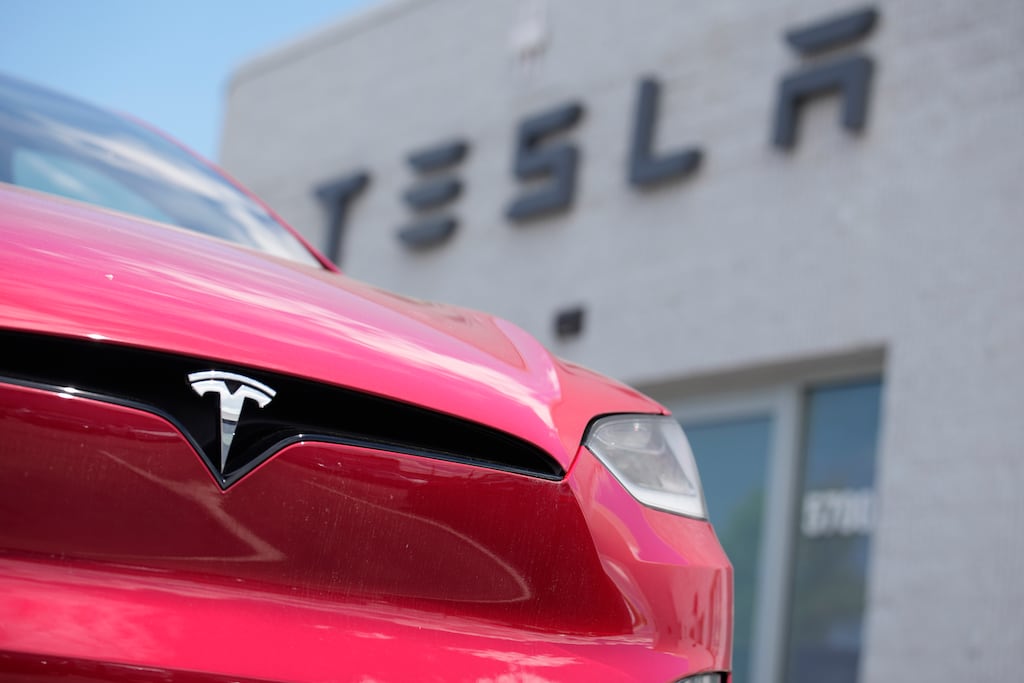Elon Musk has said Tesla’s valuation could go as high as $5 trillion (€4.6 trillion) as it pivots to autonomous driving and artificial intelligence (AI) – seven times its value today. The company’s shares are down more than 10 per cent in the past week after its robotaxi event disappointed investors. But even if Tesla had delivered on the hype, should robotaxis be that big a deal for investors today?
Despite recent declines, Tesla shares trade at 80 times forward earnings – a steep premium to global peers. That reflects hopes that its heavy AI spending will make it a key beneficiary of a shift to fully self-driving cars and that the transformation will arrive fairly quickly.
But the pay-off is likely to take much longer than expected, with the beneficiaries spread out over a wide range of industries and companies.
Robotaxis have the potential to be transformative – should they become mainstream. For that to happen, mass production and commercialisation must come first, which will mean many more years of development and testing. It could also require a whole new approach to car manufacturing.
Ian O’Riordan: Fearghal Curtin reminds us there’s no right or wrong way to run a marathon
The rural Dublin family farm where the best chefs in Ireland source their produce
Anne Enright: ‘I’m in a lull. I’m trying to recalibrate after a long decade of elder care’
Halloween films: 10 great horrors to stream for a fright this Samhain
Musk did not provide details on the technology behind the robotaxis or how he would cut the cost of self-driving cars. The latter is key: carmakers need to offer a compelling cost advantage for customers and robotaxi operators to justify the cost per mile of an unproven technology.
Critics have been sceptical about how soon Tesla’s promised self-driving taxi, priced under $30,000, less than its cheapest Model 3, will hit markets. It has taken Chinese tech group Baidu, which operates fully driverless cabs in China, seven years of development, extensive road testing and six generations of robotaxis to get its latest model down to around $28,500.
For now, the economic argument for robotaxis remains weak. There is a limit to how low costs can go because of the high prices of the cameras, radars, chips and lidar sensors that are in them. Traditional automakers would need to invest heavily in software development to catch up.
[ Elon Musk’s Tesla teams up with China’s Baidu for driver assistanceOpens in new window ]
Mass adoption is also a long way off. Development and testing will take time. Addressing safety concerns will require even more. Operating driverless cars on highways and in urban environments, with pedestrians, animals, bicycles and other hard-to-predict obstacles, comes with a high safety bar.
Meanwhile, fares for robotaxi rides are typically lower than for traditional cabs. Robotaxi networks, which also need to provide cleaning and remote assistance, are not yet profitable.
Baidu’s operation, which has completed seven million rides as of July, has yet to break even despite using its own robotaxis at rock-bottom prices. Waymo, which runs more than 100,000 paid robotaxi rides per week in the US, is also loss-making. GM’s autonomous vehicle business, Cruise, booked a $5.8 billion loss from 2021 to 2023.
With economic returns sufficiently uncertain, makers of self-driving cars will end up competing on cost for mass-market adoption. That could require a wholly different approach to making electric vehicles (EVs). Instead of each carmaker building their own from scratch, as Tesla is doing, outsourcing manufacturing will start making more sense. Standardising as much hardware production as possible and focusing on differentiation through software would squeeze costs down faster.
[ Thinking of switching to an electric vehicle? Here’s what you need to considerOpens in new window ]
Waymo, the driverless car company owned by Google’s parent company Alphabet, is an example of the right path. It entered a partnership with Hyundai Motor this month to integrate Waymo’s fully autonomous technology into Hyundai’s EVs. Elsewhere, Foxconn, the world’s largest contract assembler for Apple, has set up a platform to tailor-make EVs on contract, offering autonomous driving modifications.
Foxconn already supplies parts to EV makers including Tesla and makes EV car parts such as camera modules, electronic control units and sensors at high volumes. Its scale means stable, low-cost parts procurement for clients.
Such EV outsourcing is expected to reach $144 billion, or 3.2 million EVs, by 2030, according to Goldman Sachs. That also means new growth for suppliers of autonomous driving-related components, for which the total market is expected to hit as high as $80 billion by 2030, according to McKinsey.
Despite the impressive speed at which EVs and self-driving functions have progressed, great areas of the nascent technology, especially around safety and regulation, remain sketchy. Given all the present uncertainties, the adoption of robotaxis in everyday life is likely to remain slow and cautious. That path is one that investors should follow. – Copyright The Financial Times Limited 2024













